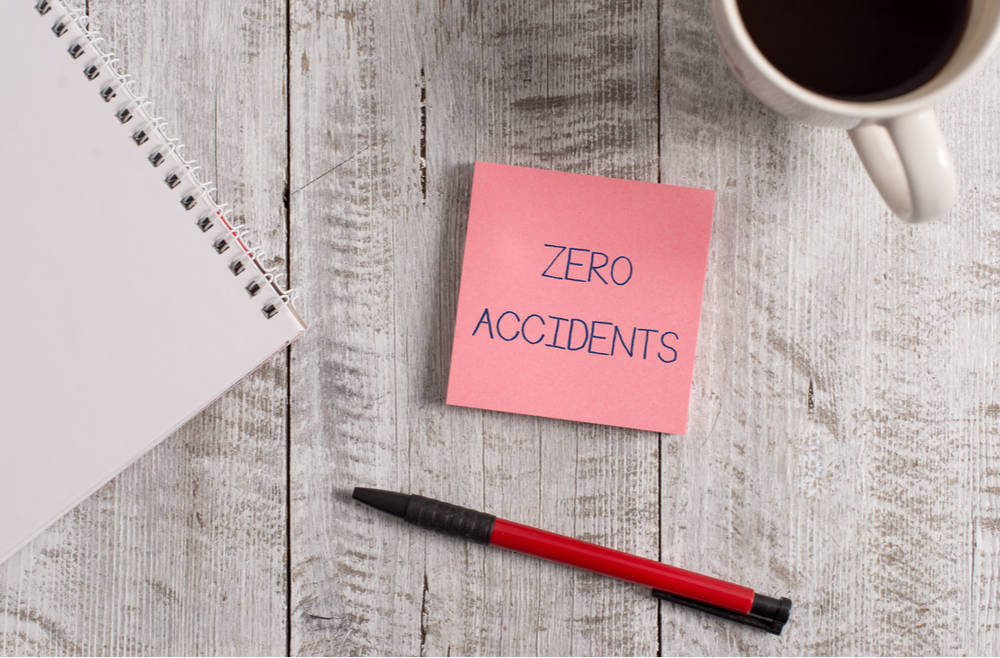How Many Is Too Many?
Safety excellence is often top of mind for any company. How should safety performance be quantified, though? Should there be a number of incidents that are deemed acceptable? The reality is, when it comes to safety, we should all be striving for one number: Zero.
A zero-incident safety culture can be woven into the very fabric of a company. What if everyone’s mindset, from senior management on down to a front-line employee, was that all workplace accidents are preventable? This is not to say that every accident will be prevented, but a zero-tolerance culture conveys a commitment to the health and well-being of employees, and the communities in which they operate.
This idea is not just a pipe-dream, though. Zero incident safety cultures are in place in the business world – and producing results.
Zero Incident Cultures in Action
@Ecolab, a leading provider of sustainability solutions, has a safety culture centered around one underlying idea: Goal Zero. In their own words, “Our overarching safety goal is zero incidents. But Goal Zero is not just a number, it is a journey. On the way there, Ecolab places great value on training and education. Both at our own facilities and customer locations, we assess risk before we start work, identify and address safety issues, and remedy hazardous situations.” This proactive commitment to safety has led to consistent results, including reducing recordable injuries.
Atkins Energy America (@atkinsglobal) was named America’s safest companies in 2017 by EHS Today. Nicole Seabaugh, an Atkins safety professional said of their culture: “Safety is not defined by the outcome, it is defined by the process. When each and every employee goes at the end of the day injury-free, that is a good thing.” This is the real focus of a zero-incident culture. It less about the outcome of zero accidents or injuries, but directing focus to continually improve the safety process.
Walsh Construction (@thebiggreenw), the 13th largest contractor in the United States, has a rich tradition of safety. Their Co-Chairman Dan Walsh says, “The most important thing we can do every day is to send men and women home in the same shape as when they arrived.” Their Core Safety Program is grounded in a simple message and approach: “No One Gets Hurt”. This four-pronged approach of training, planning, measuring, and relating has led to a stellar track record, reflected in the many safety awards they have won.
Being Proactive Makes the Difference
A zero-incident culture requires continuous improvement in risk management and accident prevention. Management should be constantly working to identify unsafe acts, hazards, and unsafe conditions that put employees in danger. Risk identification is only half the battle, though, if not less. What truly sets a zero-incident safety culture apart is the willingness to implement strategies and practices in order to proactively prevent accidents.
OSHAcademy outlines some of the key principles of a proactive approach to safety:
- Accident analysis to fix the system, not the blame – Remember the underlying reason for having a strong safety culture. It’s not for financial gains or PR reasons. It is because a zero-incident culture assures an employee that their company is committed to their safety and health. Therefore, the goal when analyzing an accident should not be to determine who to blame, but rather, what – to glean what is broken in the current system, and what changes can be made to prevent future accidents. It is important to have the mindset that there is always room for improvement with current workplace safety policies.
- Safety Committees and/or Teams – The importance of having a group of people devoted to safety management cannot be understated. Understandably, those in other management roles may not have safety at the top of mind when performing or planning a given task or project. A safety manager or committee can provide the extra scrutiny necessary to ensure occupational safety.
- Inspection and Job Hazard Analysis Programs – Safety programs to proactively identify workplace hazards would be key functions of the safety committees. Like accident analysis, they should be performed with the intention of repairing the safety process, not disciplining an employee. Frequent inspections eliminate unsafe practices before they manifest in the form of workplace accidents or injuries.
- Safety Training and Education – The key to effective training is that it must not be viewed or used as a form of punishment. When used proactively, safety training is a valuable and enlightening experience wherein employees can actively participate in their own safety management. This creates top-to-bottom buy-in for a zero-incident culture.
- Accountability/Compliance Systems That Do Not Tie Discipline to Accidents – A theme should be emerging here: a zero-incident culture is effective because it uses proactive strategies and practices to prevent future accidents, instead of acting reactively to past ones. The key to ensuring compliance and accountability is identifying unsafe acts that need to be eliminated and then finding ways to manage them. The most effective safety management solutions invite collaboration, communication, and understanding between employees and leadership.
Implementing Technology to Optimize Safety
These ideas from OSHAcademy outline a clear strategy to an effective safety culture, but they are not achieved easily. Especially in large enterprises, education, analysis, tracking, and enforcement can be very difficult to sustain. The sheer amount of data to be analyzed can be overwhelming. Even with designated personnel devoted entirely to safety, there may be cracks in a proactive safety approach. To fill those gaps, companies can implement technology solutions into the safety process. The more that analysis and enforcement can be automated, without compromising accountability or disregarding human input, the more attainable a zero-incident safety culture is.

